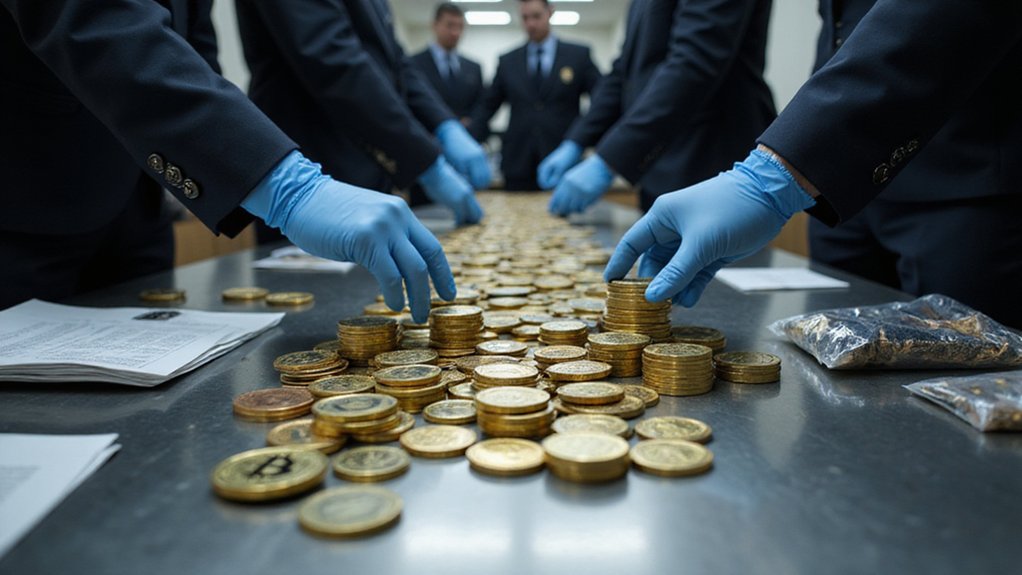While most government agencies struggle to balance their budgets, the U.S. Secret Service has quietly assembled a rather impressive cryptocurrency portfolio—albeit one built entirely from confiscated criminal proceeds. Over the past decade, the agency has seized nearly $400 million in digital assets, creating what amounts to one of the world’s largest institutional crypto cold wallets through decidedly unconventional means.
The crown jewel of this inadvertent accumulation came through a single seizure of over $225 million in USDT, linked to elaborate cryptocurrency investment scams that targeted victims globally. These weren’t your garden-variety phishing attempts, but sophisticated “pig butchering” operations—a term that perfectly captures the methodical fattening of victims before the inevitable slaughter of their bank accounts.
The methodical fattening of victims before the inevitable slaughter of their bank accounts perfectly captures these sophisticated digital predators.
The agency’s success stems from a potent combination of blockchain forensics and old-fashioned detective work. The Global Investigative Operations Center employs advanced analytics to untangle complex money laundering networks, often involving hundreds of thousands of transactions designed to obscure the digital paper trail.
What emerges is a fascinating cat-and-mouse game where criminals fragment illicit proceeds across multiple addresses—labeled with bureaucratic precision as “USDT Token Groups A through G”—while investigators patiently follow the breadcrumbs using open-source intelligence and blockchain analysis.
The scams themselves display remarkable sophistication in their psychological manipulation. Romance-investment schemes particularly target older individuals, with fraudsters establishing elaborate fake relationships before shifting to investment “opportunities.” The financial carnage extends far beyond individual cases, with the FBI reporting over $5.8 billion in cryptocurrency fraud losses during 2024 alone.
Victims deposit funds into platforms that simulate legitimate trading environments, complete with fabricated profit displays, only to discover withdrawal attempts blocked by mysterious fees and taxes that never quite resolve. Investigators identified 144 accounts at virtual currency exchange OKX that formed part of the coordinated laundering operation.
Perhaps most intriguingly, the Secret Service’s success depends heavily on industry cooperation. Major exchanges like Coinbase and stablecoin issuers including Tether actively assist in freezing suspicious wallets and sharing transaction data.
Tether’s CEO has emphasized the company’s transparency efforts, though one might wonder whether “leadership in compliance” is truly the selling point most cryptocurrency enthusiasts originally envisioned. All seized assets undergo comprehensive third-party audits to verify their integrity and ensure compliance with federal custody requirements.
This unprecedented accumulation of seized digital assets represents both law enforcement’s adaptation to financial innovation and criminals’ persistent creativity in exploiting technological advancement for decidedly traditional purposes.









